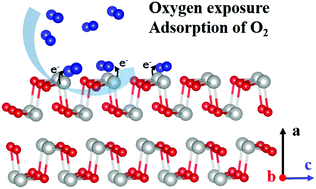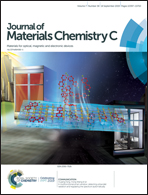Oxygen adsorption and its influence on the thermoelectric performance of polycrystalline SnSe†
Abstract
SnSe, a nontoxic and earth-abundant thermoelectric material, has stimulated wide attention since the SnSe crystals were reported to exhibit high promising thermoelectric performances. However, this can be observed only for properly synthesized and handled single crystal samples. Here, we experimentally revealed the origin of the poor performance of an n-type polycrystalline SnSe sample by employing scanning transmission microscopy and spectroscopy for the first time. The adsorbed oxygen was identified as a hole-like acceptor because electrons were captured by oxygen due to its large electronegativity. The maximum ZT value of n-type SnSe was promoted from 0.3 to ∼1.0 at 773 K by optimizing carrier concentration via preventing oxygen adsorption. With the knowledge of the oxygen effects on thermoelectric performance and after finding that oxygen is the reason, we further provided a solution by alloying congeners S and Te having larger and smaller electronegativities, respectively. The power factor of SnSe alloyed with Te was superior to that of SnSe alloyed with S, which further confirmed the impact of the additive's electronegativity on the electrical transport properties of SnSe. Our results elucidate that oxygen effects must be taken into consideration when preparing polycrystalline thermoelectric materials.

- This article is part of the themed collection: 2019 Journal of Materials Chemistry C HOT Papers


 Please wait while we load your content...
Please wait while we load your content...